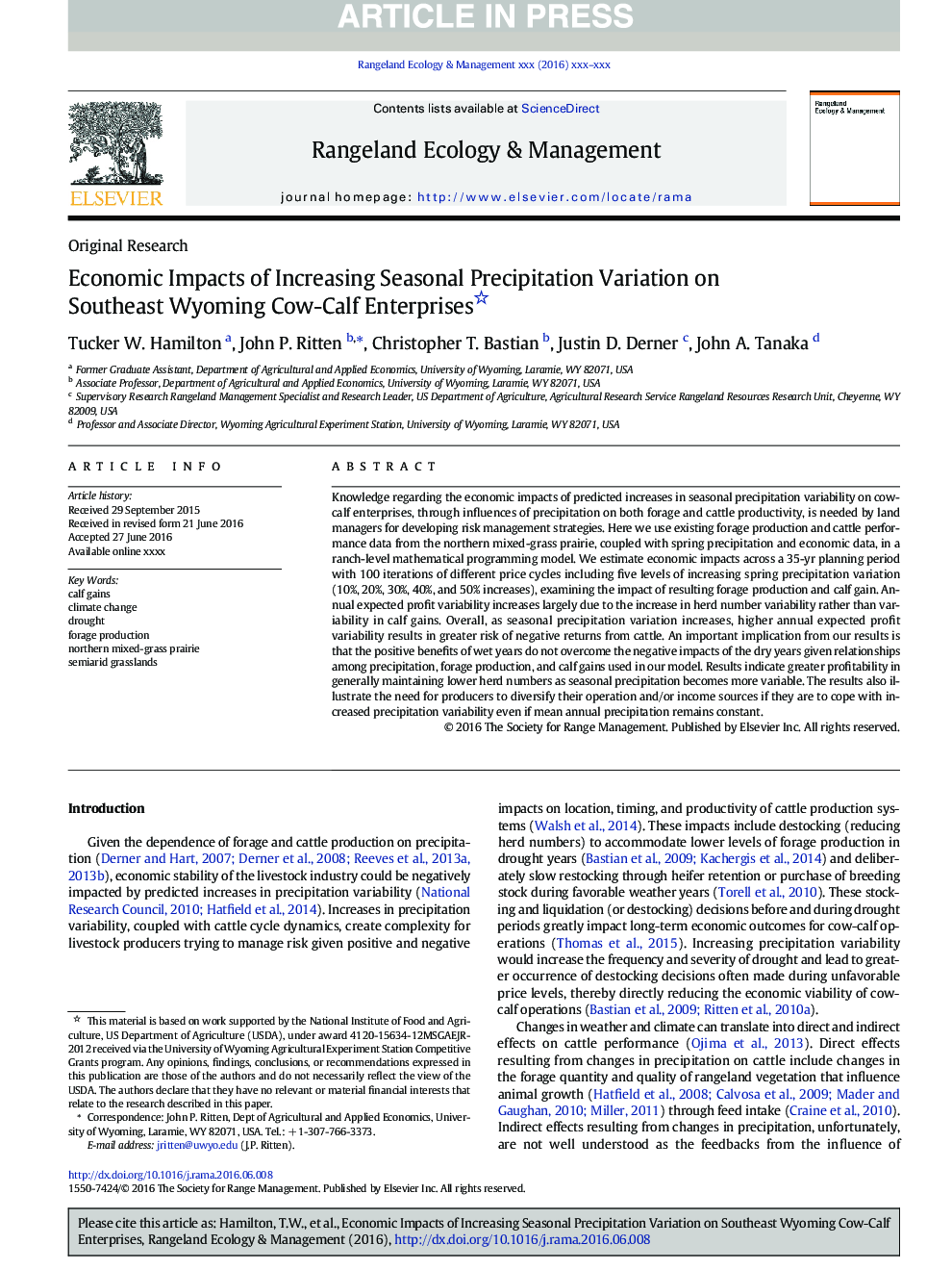| Article ID | Journal | Published Year | Pages | File Type |
|---|---|---|---|---|
| 5745261 | Rangeland Ecology & Management | 2016 | 9 Pages |
Abstract
Knowledge regarding the economic impacts of predicted increases in seasonal precipitation variability on cow-calf enterprises, through influences of precipitation on both forage and cattle productivity, is needed by land managers for developing risk management strategies. Here we use existing forage production and cattle performance data from the northern mixed-grass prairie, coupled with spring precipitation and economic data, in a ranch-level mathematical programming model. We estimate economic impacts across a 35-yr planning period with 100 iterations of different price cycles including five levels of increasing spring precipitation variation (10%, 20%, 30%, 40%, and 50% increases), examining the impact of resulting forage production and calf gain. Annual expected profit variability increases largely due to the increase in herd number variability rather than variability in calf gains. Overall, as seasonal precipitation variation increases, higher annual expected profit variability results in greater risk of negative returns from cattle. An important implication from our results is that the positive benefits of wet years do not overcome the negative impacts of the dry years given relationships among precipitation, forage production, and calf gains used in our model. Results indicate greater profitability in generally maintaining lower herd numbers as seasonal precipitation becomes more variable. The results also illustrate the need for producers to diversify their operation and/or income sources if they are to cope with increased precipitation variability even if mean annual precipitation remains constant.
Related Topics
Life Sciences
Agricultural and Biological Sciences
Agricultural and Biological Sciences (General)
Authors
Tucker W. Hamilton, John P. Ritten, Christopher T. Bastian, Justin D. Derner, John A. Tanaka,
